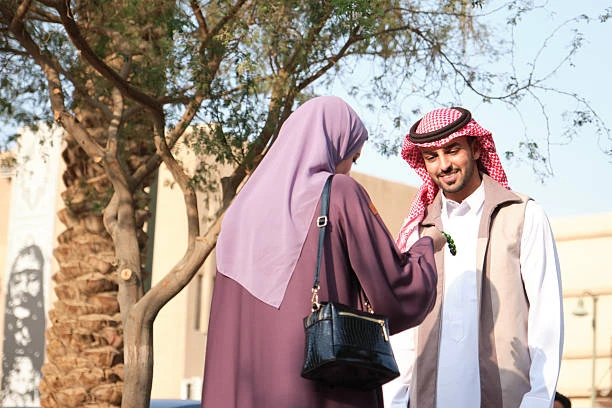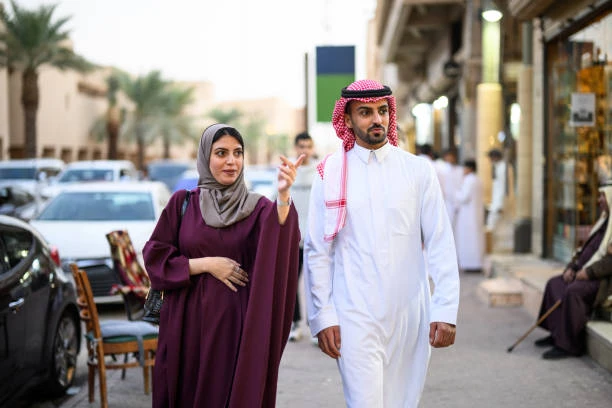Writing a letter to a friend in Arabic is a wonderful way to stay connected, share your thoughts, or simply let them know you care. Arabic is a rich and expressive language, and even a short, heartfelt letter can make a big impact.
Whether you’re just starting to learn Arabic or you’re already comfortable with the language, this guide, How to Write a Letter to a Friend in Arabic, will help you write a meaningful letter step by step. We’ll cover everything from greetings to cultural tips, with examples to make it easy.
How to Write a Letter to a Friend in Arabic? 8 Easy Steps To Follow:
Step 1: Understand the Structure of an Arabic Letter:
Arabic letters, like letters in many cultures, follow a general structure. Here’s how to organize your letter:
- التحية (Greeting): Start with a warm greeting to address your friend.
- المقدمة (Introduction): Briefly introduce the purpose of your letter.
- الموضوع (Main Body): Share your thoughts, updates, or stories.
- الختام (Closing): End with a kind closing and your name.
Step 2: Choose the Right Tone:
Arabic letters can be formal or informal, depending on your relationship with the friend. Since this is a letter to a friend, you’ll use a colloquial or informal tone. However, if your friend is from a region where Modern Standard Arabic (MSA) is preferred, you can use that instead.
- Informal Arabic: Use the dialect your friend speaks (e.g., Egyptian, Levantine, Gulf).
- Formal Arabic: Use Modern Standard Arabic (MSA) if your friend prefers it.
Step 3: Start with a Greeting:
Begin your letter with a warm and friendly greeting. Here are some common phrases:
- (Colloquial Arabic):
- "يا صديقي العزيز" (Ya sadiqi al-aziz) – My dear friend.
- "مرحباً ي اسم الصديق" (Marhaban ya [friend’s name]) – Hello, [friend’s name].
- "كيف حالك؟ أتمنى أن تكون بخير" (Kayfa halak? Atamanna an takun bikhayr) – How are you? I hope you’re doing well.
- (Modern Standard Arabic):
- "عزيزي اسم الصدي" (Azizi [friend’s name]) – Dear [friend’s name].
- "تحياتي الحارة لك" (Tahiyyati al-harrah lak) – Warm greetings to you.
Step 4: Write the Introduction
After the greeting, briefly explain why you’re writing. Keep it simple and friendly. For example:
- بالعربي العامي: "كنت أفكر فيك اليوم وقررت أكتب لك علشان أطمن عليك"
I was thinking about you today and decided to write to check on you.
- بالعربي الفصيح: "أردت أن أكتب إليك لأطمئن على أحوالك وأشاركك بعض الأخبار"
I wanted to write to you to check on how you’re doing and share some news.
Step 5: Write the Main Body
This is where you share your thoughts, updates, or stories. Be personal and conversational. Here are some ideas:
- Talk about your life: "أنا هالي الأيام مشغول بشغلي الجديد" (Ana hali el-ayyam mashghool bishoghl el-gdeed) – These days, I’m busy with my new job.
- Ask about their life: "إيه الأخبار عندك؟ شو جديد معك؟" (Eh el-akhbar 3andak? Shu jdeed ma3ak?) – What’s new with you?
- Share a memory: "فاتكر لما كنا نلعب كرة القدم مع بعض؟" (Fatakkar lama konna nel3ab kora el-qadam ma3 ba3d?) – Remember when we used to play soccer together?
Step 6: Close the Letter:
End your letter with a warm closing. Here are some examples:
- "أشوفك قريب إن شاء الله" (Ashufak 2areeb inshallah) – See you soon, God willing.
- "تحياتي لكل العيلة" (Tahiyyati lekol el-3eela) – Greetings to the whole family.
- "مع أطيب التحيات" (Ma3 atyab al-tahiyyat) – With best regards.
- "أرجو أن أسمع منك قريباً" (Arju an asma3 mink qareeban) – I hope to hear from you soon.
Step 7: Sign Off:
Finish with your name. You can also add a personal touch, like:
- بالعربي العامي :صديقك اللي بيحبك، [اسمك]" (Sadi2ak elli bi7ebbak) – Your friend who loves you.
- بالعربي الفصيح: "صديقك المخلص، [اسمك]" (Sadiqak al-mukhlis) – Your loyal friend.
Step 8: Add Cultural Touches:
In Arabic culture, it’s common to include blessings or religious phrases. For example:
- "تقبل الله منا ومنك" (Taqabbal Allah minna wa mink) – May Allah accept from us and you.
- "دمت بخير" (Dumt bikhayr) – May you stay well.
Example Letter:
بالعربي العامي (Egyptian Dialect):
يا صديقي العزيز،
كيف حالك؟ أتمنى أن تكون بخير. كنت أفكر فيك اليوم وقررت أكتب لك علشان أطمن عليك. أنا هالي الأيام مشغول بشغلي الجديد، بس كل شيء تمام. إيه الأخبار عندك؟ شو جديد معك؟ فاتكر لما كنا نلعب كرة القدم مع بعض؟ دي كانت أيام حلوة أوي.
أشوفك قريب إن شاء الله، وتحياتي لكل العيلة.
صديقك اللي بيحبك،
[اسمك]
بالعربي الفصيح (Modern Standard Arabic):
عزيزي اسم الصديق،
تحياتي الحارة لك. أردت أن أكتب إليك لأطمئن على أحوالك وأشاركك بعض الأخبار. أنا هذه الأيام مشغول بعملي الجديد، ولكن كل شيء على ما يرام. كيف حالك؟ ماذا لديك من أخبار؟ أتذكر عندما كنا نلعب كرة القدم معاً، كانت تلك أياماً جميلة.
أرجو أن أسمع منك قريباً، ومع أطيب التحيات.
صديقك المخلص،
اسمك
English version:
Dear Friend’s Name,
Warm greetings to you. I wanted to write to you to check on how you’re doing and share some news. These days, I’ve been busy with my new job, but everything is going well. How are you? What’s new with you? I remember when we used to play soccer together—those were such beautiful days.
I hope to hear from you soon, and with best regards.
Your loyal friend,
Your Name
Key Differences Between the Two Versions:
- Dialect vs. MSA: The Egyptian dialect is more casual and conversational, while MSA is formal and structured.
- Phrasing: The dialect uses phrases like "إيه الأخبار؟" (What’s new?) and "فاتكر لما" (Do you remember when?), which are more colloquial. MSA uses phrases like "ماذا لديك من أخبار؟" (What news do you have?) and "أتذكر عندما" (I remember when), which are more formal.
- Tone: The dialect feels personal and friendly, while MSA feels polished and respectful.
Tips for Writing a Great Letter:
- Keep it Personal: Share stories and ask questions to make it feel genuine.
- Use Simple Language: Don’t overcomplicate it—write as if you’re talking to your friend.
- Practice Handwriting: If you’re writing by hand, practice your Arabic handwriting to make it neat and readable.
- Add Emojis (Optional): If it’s a digital letter, emojis can add a fun touch!
Final Thoughts on How to Write a Letter to a Friend in Arabic:
Writing a letter in Arabic, whether in a dialect or Modern Standard Arabic, is a meaningful way to connect with a friend. It doesn’t have to be perfect—what matters most is the thought and effort you put into it. Keep it sincere, personal, and true to your relationship. A heartfelt letter, no matter how simple, can brighten someone’s day and strengthen your bond. So, take a moment to write, and let your words do the rest. Happy writing!
FAQs on How to Write a Letter to a Friend in Arabic:
1. Should I use a dialect or Modern Standard Arabic (MSA)?
It depends on your friend’s background. If they use a specific dialect (e.g., Egyptian, Levantine), write in that dialect for a personal touch. If unsure, use MSA, as it’s universally understood.
2. How do I start the letter?
Begin with a warm greeting:
- Dialect: "يا صديقي العزيز" (My dear friend) or "مرحباً" (Hello).
- MSA: "عزيزي/عزيزتي [اسم]" (Dear [name]) or "تحياتي" (Greetings).
3. What should I write about?
Keep it simple and sincere:
- Share updates: "أخبارك إيه؟ أنا بخير والحمد لله" (How are you? I’m fine, thank God).
- Ask about them: "شو جديد عندك؟" (What’s new with you?).
- Mention memories: "فاتكر يوم…؟" (Remember the day…?).
4. How do I end the letter?
Close warmly:
- Dialect: "أشوفك قريب إن شاء الله" (See you soon, God willing).
- MSA: "مع أطيب التحيات" (With best regards).
- Sign off with your name: "صديقك/صديقتك، [اسمك]" (Your friend, [Your name]).
5. Are there cultural phrases I should include?
Optional, but thoughtful additions:
- Blessings: "الله يحفظك" (May God protect you).
- Well-wishes: "دمت بخير" (Stay well).
- Use these if they align with your friend’s values.








![What is The Expat Loans in Saudi Arabia:? [A Comprehensive Guide 2025]](https://humanonline.org//uploads/articles/image_1745306071.webp)